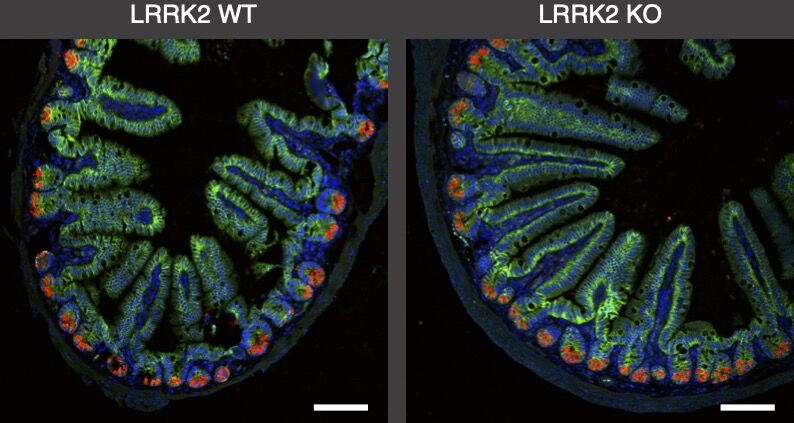News
Swamy lab rethinking the role of LRRK2 in Crohn’s disease
New research from the MRC Protein Phosphorylation Unit in the School of Life Sciences, questions the importance of the inflammatory bowel disease associated gene, Lrrk2, in regulating intestinal Paneth cells and antimicrobial secretion in the gut
Published on 18 November 2024

Dr Anna Tasegian
LRRK2 is a kinase associated with Crohn’s disease, a type of inflammatory bowel disease, and Parkinson’s disease. LRRK2 was thought to be driving inflammation in the gut by regulating the expression and release of lysozyme, an antimicrobial enzyme produced by intestinal defence cells called Paneth cells. Using mice models and intestinal organoids, the team tried to reproduce previous findings connecting LRRK2 to lysozyme regulation. However they found that lysozyme levels remained unchanged regardless of the presence of LRRK2. Additionally, Lrrk2 gene expression was undetectable in both murine and human Paneth cells. This discovery challenges earlier studies, and suggests that the relationship between LRRK2 and Crohn’s disease may need to be re-evaluated.
Lead author Dr. Anna Tasegian said: "I am happy these findings that LRRK2 is not expressed in Paneth cells, was recognised as valuable by the journal and published. I believe that the field studying the role of LRRK2 in Crohn's disease will benefit from our findings."
This research from the Swamy lab was published on 8th October 2024, in Nature Immunology. The full article can be accessed here.

Representative immunofluorescence images of ileal sections from Lrrk2+/+ (WT) and Lrrk2−/− (KO) mice stained with lysozyme antibodies (red), E-cadherin antibodies (green) and 4′,6-diamidino-2-phenylindole (DAPI) (blue)